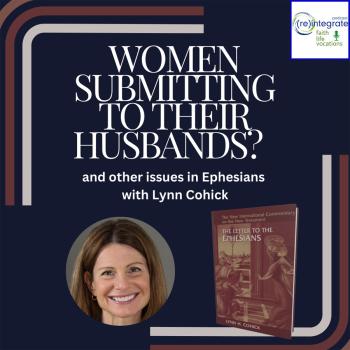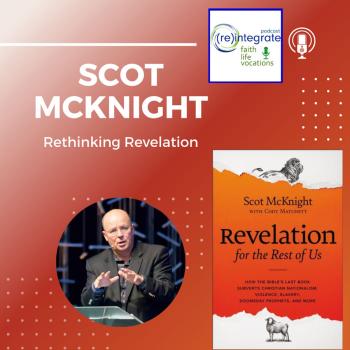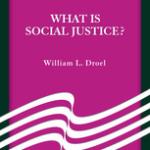How Nostalgia Warps Our Conception of Reality
 As I struggle through my middle-aged years, I reflect back nostalgically to a sweeter time when I had less cares and life was simpler. I think, If only life could always be like it was when I was seven years old! Or twelve, Or twenty-one.
As I struggle through my middle-aged years, I reflect back nostalgically to a sweeter time when I had less cares and life was simpler. I think, If only life could always be like it was when I was seven years old! Or twelve, Or twenty-one.
We have a tendency to think that somewhere in the past, things were perfect. With this presumption, we naturally think that we’ve somehow lost that perfection and our lives are now filled with frustrations as we are constantly trying to make things perfect again.
But we miss the fact that there never was a time when things were perfect. We see the past through the lens of nostalgia, not seeing that the plan all along was not to keep everything perfectly the same, but to develop and grow in maturity.
The plan was always to take what was good and to make something great.
Nostalgic for Perfection
Christians are nostalgic about the Garden of Eden. We think it must have been pristine, beautiful, and perfect. This is a quite common misconception of the original creation.
For instance, as a case study, look at the book It’s Not Supposed to be This Way (Nelson Books, 2018), by Lysa Terkeurst. As the subtitle states, she wants to help her readers in “finding unexpected strength when disappointments leave you shattered.” She writes,
“Genesis tells us that the human heart was created in the perfection of the garden of Eden. Can you image what the world looked like when God first created it? When he said it was all good. Very good. And it was all perfect.
Perfection’s symphony filled the atmosphere. Everything ebbed and flowed in complete harmony. It sang with the richest of tones. And danced with ridiculous precision. There was nothing that didn’t look right or feel right. It was beautiful and peaceful and fulfilling. There was perfect peace in relationships. Adam and Eve were so beautifully connected to each other, and they lived in the perfect presence of God. It was paradise with a unique intimacy where God would interact in direct relationship with Adam and Eve. There was perfect provision and perfect fulfillment of their purpose. There was no sadness or confusion or injustice. There was no disease or divorce or depression or death. There were no misaligned motives, no manipulations, no malicious intentions.
It was everything you could ever dream up and then so much more than that.
So the human heart was created in the context of the perfection of the garden of Eden. But we don’t live there now. This is why our instincts keep firing off the lie that perfection is possible. We have pictures of perfection etched into the very DNA of our souls.” (pp. 4-6)
That’s a well-written passage, no doubt. It makes us yearn for what we’ve lost. She is so right that the creation was in harmony, that it was beautiful, peaceful, and fulfilling. She beautifully and properly says that there was a unique intimacy where God would interact in direct relationship with Adam and Eve. She is correct to say that there was provision and that humans were given purpose. Yes, there was no sadness, confusion, injustice, disease, divorce, or depression. She got all that from Scripture.
But, as I have studied the Bible, I think that the rest of it is conjecture. She wrote, “It was everything you could ever dream up,” which is what she was guilty of in a lot in her beautiful prose: she dreamed it up.
Sadly, while she gets many things correctly, her foundational premise is flawed (that the garden was once perfect and also, in the rest of the book, she makes the case that we are “between gardens”), so she ends with a misdiagnosis of our problem.
God’s intention has never been for us to reprise some perfect past. God has always intended humanity to develop, to fulfill, to build on what God has provided. God has always looked toward the future for us, wanting us to grow up in maturity. This is not perfect, but it is good.
Perfect is the Enemy of Good
In Genesis chapter 1, seven times God saw what he created and that it was “good,” including what we read after all was said and done (literally, since God spoke the world into existence!), “God saw all that he had made, and it was very good” (Genesis 1:31).
“Good” is not the same as “Perfect.” The difference is this: If something is perfect, anything done to it would ruin its perfection. So, when you view artwork in the museum, don’t touch! If you hike in the wilderness mountains, leave no trace! If something’s perfect, our main task is to leave it alone.
With this idea of a perfect Garden of Eden lodged in our heads, we are forced to believe that it was perfect until those pesky humans entered and started messing things up. But God didn’t see it that way. In fact, “The LORD God took the man and put him in the Garden of Eden to work it and take care of it” (Genesis 2:15).
God gives the man the responsibility to make something of what God had made. Not just to “take care of it” so that it remained in pristine perfection, but to “work it” or “cultivate it” at the same time. God actually made us to do stuff with the creation. If it were perfect, God would have said, “Leave no trace!”
Creation Wasn’t Perfect
If the creation was “perfect,” then why, when God created humans in his image, did he give them the mandate (among other things) to “fill the earth and subdue it?”
- To fill something that is already perfect would be to spoil it.
- To subdue something means that it wasn’t some sort of perfectly blissful place. The Hebrew word for “subdue” literally means “to make to serve, by force if necessary.” It’s the same root word for “footstool,” with the connotation of forcefully putting something under someone’s feet in submission.
If the creation was perfect, where “there was nothing that didn’t look right or feel right,” then how do we explain the presence of the Serpent?
If the creation featured “perfect relationships” where “Adam and Eve were so beautifully connected to each other,” then how do we explain the obvious miscommunication between the two of them when it came to understanding God’s command about the all-important Tree of the Knowledge of Good and Evil?
No, it wasn’t “perfect,” but it was good. It was the place where the first humans were to mature and grow in their relationships with God and with each other (and with their children, and their grandchildren, ad infinitum) and where the growing human race would grow as a society committed to each others’ flourishing, and continuing the work of cultivating the raw materials of God’s good creation to continue the creative process, all the while taking good care of it.
From Garden to City
So, let’s not pine away for some long-ago “perfect” Garden.
The Garden was never the end goal for God. It was always the beginning of a story of developing maturity and robust work that makes culture for the flourishing of everyone and everything. That was the plan all along.
Of course, we have rebelled against that plan and it all went dreadfully off-course.
The proper diagnosis of our problem is not that we are longing for a perfection lost in the Garden of Eden, but that we’ve lost what it means to be human: To be image-bearers, developing our loving relationship with God and with others, doing the work God has prepared in advance for us to do in order to progress ourselves and our culture. We’ve gone off course, and so, of course, we feel lost.
But that doesn’t end God’s plan. His goal is still the same: He created a humanity that would love and work in harmony with each other. This is what the Old Testament called “Shalom” and the New Testament called “The Kingdom.”
Jesus Christ restores the trajectory of human development. We are now able to get back on track toward all that God intended for us. Jesus’s death and resurrection reconciled us back to God, back to our neighbors, and we are able to more fully do the task of the mandate given us back in Genesis 1 and 2 to “be fruitful and multiply, to fill the earth and subdue it, and have dominion” (Gen 1:28), to “work it and take care of it” (Gen 2:15).
And, by the way, the plan doesn’t end with images of humans frolicking in a perfectly restored Garden of Eden.
It ends in a City.
In Revelation 21 and 22, we see the holy city of New Jerusalem, bedazzling in precious stones, measured out in symbolically perfect dimensions. It has high walls and gates that never close, with people bringing their splendor, honor, and glory into it. In this city is the river of the water of life, flowing from Jesus Christ’s throne down the middle of the great street of the city, on each side of the river stands the mighty Tree of Life.
The garden is now a city, which means that God’s intention all along was for us to develop and build, making great things with the good things of his creation.
Creation was never seen as perfect, but it was very good.
Photo: Maroon Bells in Colorado, taken by Bob Robinson












